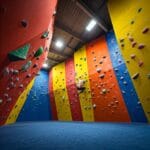HAPPY FALL Y'ALL! --- Check out our HOLIDAY gift ideas!
Unlocking the Great Outdoors: Mastering the Art of Camping
As the sun slowly sets behind the towering pines, casting a warm glow on your campsite, you can’t help but feel a sense of peace and contentment wash over you. The gentle crackle of the campfire lulls you into a state of tranquility, and the scent of your s’mores wafts through the air, tantalizing your taste buds. This is what camping is all about – an escape from the hustle and bustle of everyday life, a chance to reconnect with nature, and an opportunity to create lasting memories with your loved ones.
However, as with any adventure, camping comes with its own set of challenges and concerns. From selecting the perfect camping gear to navigating the wilderness, there’s a lot to consider. But fear not, fellow adventurers, because this article is here to guide you through the ins and outs of camping, ensuring that your next outdoor excursion is both enjoyable and stress-free.
I. Car Camping: The Gateway to Adventure
For those new to the world of camping or families seeking a more comfortable introduction, car camping is the perfect starting point. With your trusty vehicle by your side, you can pack all the essentials and set up camp within a stone’s throw of your trusty steed.
Choosing the Perfect Car Camping Tent
When it comes to car camping, your tent is your home away from home. Look for a spacious option with ample headroom and a sturdy frame that can withstand the elements. Consider features like vestibules for storing gear, and don’t forget to factor in the number of occupants when selecting the size.
Essential Car Camping Gear Checklist
From sleeping bags and camping chairs to lanterns and first-aid kits, having the right gear can make or break your camping experience. Consult a comprehensive checklist to ensure you’ve got all the essentials covered, and don’t forget to pack your camping stove for those delicious camp-cooked meals.
Delicious and Easy Camp Cooking Recipes
Speaking of camp-cooked meals, there’s nothing quite like enjoying a hearty meal after a day of exploring the great outdoors. Embrace the art of campfire cooking with simple yet delicious recipes that are sure to satisfy even the most discerning palates.
Top Car-Accessible Campsites
With your car camping setup dialed in, it’s time to explore the wealth of car-accessible campsites scattered across the country. From secluded forest retreats to breathtaking mountain vistas, there’s a campground to suit every taste and preference.
II. Backpacking: Embracing the Trail
For those seeking a more immersive outdoor experience, backpacking is the ultimate adventure. With your gear strapped to your back, you’ll embark on multi-day treks through some of the most stunning landscapes nature has to offer.
Selecting a Lightweight Backpacking Tent
When it comes to backpacking, weight is everything. Look for a lightweight yet durable tent that strikes the perfect balance between protection and portability. Consider factors like single-wall or double-wall construction, and don’t forget to factor in the number of occupants.
Choosing the Right Backpack for Your Needs
Your backpack is your loyal companion on the trail, carrying all your essential gear. Consider factors like capacity, fit, and suspension system to ensure a comfortable and efficient journey. Remember, a well-fitted backpack can make all the difference when tackling those rugged miles.
Backpacking Meal Planning and Resupply Strategies
Proper nutrition is crucial when embarking on a backpacking adventure. Learn to plan and pack lightweight, nutritious meals that will keep your energy levels high on the trail. Additionally, familiarize yourself with resupply strategies for longer treks, ensuring you never run out of fuel for your adventure.
Popular Backpacking Trails
With the right gear and knowledge in hand, it’s time to lace up your hiking boots and hit the trail. From the iconic Appalachian Trail to the stunning Pacific Crest Trail, there’s no shortage of breathtaking backpacking destinations to explore.
III. See, Hear, Do: Learning Through Experience
Camping is an experiential adventure, and the best way to master it is through first-hand encounters. Here are some “see, hear, do” learning themes to help you immerse yourself in the great outdoors:
See: Observe the beauty of nature firsthand. Take in the vibrant colors of a sunset over the lake, marvel at the constellations twinkling in the night sky, or watch the birds soar overhead.
Hear: Listen to the sounds of the wilderness. The gentle rustling of leaves in the breeze, the calming trickle of a nearby stream, or the crackle of the campfire – these auditory experiences will transport you to a place of serenity.
Do: Get your hands dirty! Pitch your tent, build a campfire (responsibly, of course), and try your hand at outdoor cooking. Learning by doing is the best way to gain confidence and create lasting memories.
IV. Mastering the Basics: The 6 W’s of Camping
Who: Whether you’re a family seeking a fun-filled adventure, a solo traveler in search of solitude, or a group of friends looking to reconnect, camping has something to offer everyone.
What: From car camping to backpacking, there are various camping styles to explore, each with its own unique set of gear, skills, and experiences.
Where: With countless campsites, national parks, and wilderness areas across the country, the possibilities for your next camping adventure are endless.
When: Camping is a year-round activity, with each season offering its own unique charms. Whether you prefer the warmth of summer or the crisp air of autumn, there’s no wrong time to embrace the great outdoors.
Why: Camping provides a much-needed escape from the stresses of daily life, allowing you to reconnect with nature, recharge your batteries, and create lasting memories.
How: By familiarizing yourself with the necessary gear, skills, and techniques, you’ll be well-prepared to tackle any camping adventure that comes your way.
V. Glossary of Common Camping Terms
Throughout your camping journey, you’ll likely encounter a variety of unfamiliar terms. Here’s a glossary to help you navigate the lingo:
Tent: A portable shelter designed to provide protection from the elements.
Sleeping bag: A lightweight, insulated bag designed for warmth and comfort during overnight camping trips.
Backpack: A sturdy, comfortable pack used to carry gear during backpacking adventures.
Hiking boots: Durable, supportive footwear designed for traversing rugged terrain.
Camping stove: A portable cooking device fueled by propane, isobutane, or other fuel sources.
Lantern: A portable lighting source that illuminates your campsite at night.
First-aid kit: A collection of medical supplies for treating minor injuries and ailments.
Campfire: A contained fire used for warmth, cooking, and creating a cozy atmosphere.
S’mores: A classic camping treat consisting of roasted marshmallows and chocolate sandwiched between graham crackers.
Hiking: The activity of walking through natural environments, often over rugged terrain.
Backpacking: A form of hiking where all necessary gear is carried in a backpack.
Camping chair: A portable, lightweight chair designed for comfortable seating around the campsite.
Sleeping pad: An insulated mat that provides cushioning and insulation from the ground when sleeping outdoors.
Camping trailer: A towable trailer equipped with amenities for comfortable camping.
RV (Recreational Vehicle): A self-contained vehicle designed for camping and travel.
National park: A protected area designated by the federal government for its natural beauty and recreational opportunities.
State park: A protected area designated by a state government for its natural beauty and recreational opportunities.
Campground: A designated area with amenities for camping, often within a park or other natural setting.
Camping hammock: A lightweight, portable hammock designed for camping and backpacking.
Camping gear: The various equipment and supplies necessary for a successful camping trip.
Camping checklist: A list of essential items to pack for a camping trip, ensuring you don’t forget anything important.
Leave no trace: A set of principles and practices aimed at minimizing the environmental impact of outdoor activities.
Camping food: Non-perishable, lightweight foods suitable for preparing meals while camping.
Camping water purification: Methods and devices used to treat and purify water for drinking and cooking while camping.
Camping etiquette: A set of guidelines and courteous behaviors to follow while camping, ensuring respect for others and the environment.
Camping with kids: Tips and considerations for making camping trips enjoyable and safe for children.
Camping with dogs: Guidelines and best practices for bringing furry companions along on camping adventures.
Solo camping: The practice of camping alone, which can be a peaceful and introspective experience.
Winter camping: Camping during the colder months, which requires additional gear and preparations.
Camping shower: A portable show









